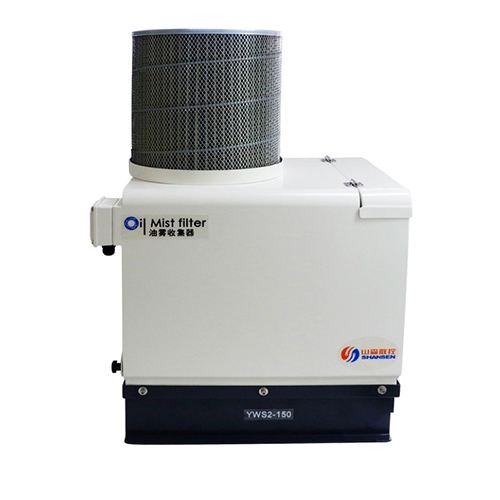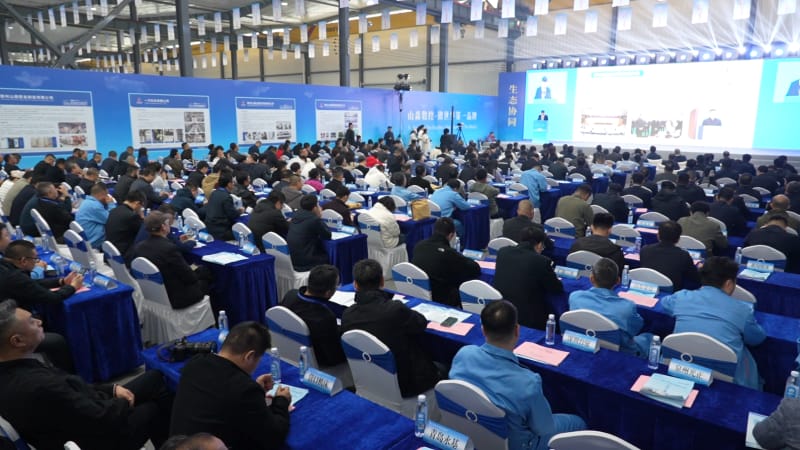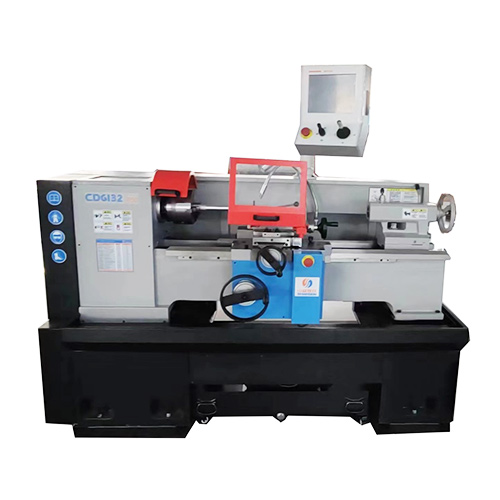-
WhatsAPP: +86 18706448138
-
Tengzhou, Shandong, China

Electric Pulse Generator: A Comprehensive Guide
Understanding the technology behind an electric pulse generator is essential for maximizing productivity and system reliability.
Table of Contents
Introduction

In today’s rapidly evolving industrial landscape, precision timing and controlled energy delivery are paramount. An electric pulse generator offers an efficient solution for delivering short, high-energy bursts in applications ranging from materials processing to medical diagnostics. As a leading developer and manufacturer of CNC machine electrical components, Shansen leverages decades of expertise to design reliable electric pulse generator systems. This comprehensive guide explores the fundamentals, benefits, design considerations, and practical applications of electric pulse generators, ensuring you have the knowledge to select and deploy the right solution for your needs.
Whether you’re upgrading your equipment or implementing pulse-based systems for the first time, understanding the technology behind an electric pulse generator is essential for maximizing productivity and system reliability.
What Is an Electric Pulse Generator?
An electric pulse generator is a device engineered to produce electrical pulses with precise amplitude, width, and repetition rate. Unlike continuous power supplies, pulse generators deliver energy in discrete bursts, enabling applications that require high peak power without excessive thermal load. At Shansen, our R&D teams focus on refining pulse characteristics to optimize efficiency and longevity.
These devices are critical to modern automation and testing environments, allowing engineers to achieve exacting standards of control and synchronization that are impossible with traditional power supplies.
Key characteristics include:
- Pulse Width: Duration of each electrical discharge.
- Pulse Amplitude: Voltage or current magnitude during the pulse.
- Pulse Repetition Rate: Frequency at which pulses are produced.
- Rise/Fall Time: Speed at which the pulse reaches its peak and returns to baseline.
These parameters can be finely tuned depending on application needs, offering unparalleled customization in energy delivery.
Advantages of Electric Pulse Generators

Precise Energy Control with Electric Pulse Generators
Electric pulse generator technology provides unparalleled control over energy delivery. By adjusting parameters such as pulse width and repetition rate, users can fine-tune processes for optimal results.
This level of control is particularly useful in laboratory research and advanced manufacturing, where repeatability and precision are crucial to success.
Reduced Thermal Stress
Delivering energy in short bursts prevents excessive heat buildup in target materials and within the generator itself. This leads to longer equipment life and reduced risk of thermal damage.
The reduction in thermal load also translates into energy savings and minimizes the need for complex cooling systems in many industrial setups.
Enhanced Peak Power
An electric pulse generator can achieve high peak power levels that exceed the capabilities of continuous power supplies, enabling applications such as pulsed laser pumping and high-voltage testing.
These capabilities are essential when testing the endurance of insulation materials or when working with high-energy systems that demand sharp, controlled discharges.
Improved Process Efficiency
With precise timing and energy delivery, processes become more efficient, reducing waste and enhancing throughput—an advantage that Shansen incorporates into every electric pulse generator design.
As productivity increases, so does the return on investment, making pulse generators a smart choice for industries aiming to enhance their competitiveness.
Core Components of an Electric Pulse Generator
- Energy Storage Module
Stores energy and releases it quickly when a pulse is triggered. Common storage elements include capacitors and inductors.
These components must be rated for high-frequency operation and capable of withstanding repetitive discharge cycles. - Switching Mechanism
Controls the discharge of stored energy. High-speed semiconductor switches such as IGBTs or MOSFETs are often used.
Proper selection of these switches impacts overall efficiency, rise time, and reliability of the electric pulse generator. - Control Unit
Provides user interface and programmable settings for pulse parameters. Advanced models from Shansen feature touchscreen displays and network connectivity.
Integration with external automation systems ensures smooth operation and enhanced real-time feedback capabilities. - Protection Circuitry
Safeguards against overvoltage, overcurrent, and thermal overload to ensure safe operation.
Modern systems also include diagnostic alerts to inform users of abnormal conditions before failures occur.
Applications of Electric Pulse Generators
Materials Processing
In processes like spark erosion and plasma generation, a reliable electric pulse generator is essential for high-precision cutting and surface treatment.
It ensures repeatable results and reduces wear on tools by delivering only the energy necessary for each pulse.
Medical Diagnostics
Medical imaging equipment, such as ultrasound and MRI scanners, relies on pulse generators to synchronize signal generation and acquisition.
These pulses are finely calibrated to optimize resolution and minimize patient exposure to electromagnetic fields.
High-Voltage Testing
Electrical equipment and insulation materials are tested under high-voltage conditions using pulse generators to assess breakdown thresholds.
This testing is vital to ensure compliance with international safety standards and to prevent equipment failure in the field.
Communications and Radar
Pulse generators produce timing signals for radar transmitters and high-speed communication systems, where timing accuracy is critical.
Precise timing allows for better signal resolution and reduces the chances of data loss or interference in transmission.
Table of Typical Electric Pulse Generator Specifications
| Parameter | Typical Range | Unit | Notes |
|---|---|---|---|
| Pulse Width | 10–1000 | nanoseconds | Adjustable in steps |
| Pulse Amplitude | 100–50,000 | volts | Dependent on model |
| Repetition Rate | 1–1000 | Hertz | Programmable |
| Rise Time | 1–50 | nanoseconds | Faster rise times increase precision |
| Energy per Pulse | 0.1–1000 | joules | Stored in capacitor bank |
| Duty Cycle | 0.01–50 | percent | Ratio of pulse width to period |
This table provides an overview of typical specifications found in professional-grade electric pulse generators. Shansen offers fully customizable units to meet unique application demands in terms of performance, size, and control.
Design Considerations for Electric Pulse Generators
Pulse Parameter Flexibility
For versatile applications, select an electric pulse generator with wide adjustment ranges for pulse width, amplitude, and repetition rate.
This ensures the equipment can adapt to varying process needs without the need for frequent hardware changes.
Thermal Management
Efficient heat dissipation is critical, especially at high repetition rates or peak power levels. Shansen units incorporate advanced cooling designs, including liquid-cooled options.
Proper thermal control not only extends the lifespan of internal components but also enhances the consistency of output signals.
Control Interface and Connectivity
Modern electric pulse generator systems should offer intuitive control interfaces and remote monitoring via Ethernet or USB. Shansen’s HMI panels allow real-time adjustments and data logging.
User-friendly software and touchscreen controls make operation simple even for new users, while remote access enables centralized process control.
Electrical Safety and Compliance
Ensure the device complies with international safety standards (e.g., IEC 61010). Integrated protection features must guard against electrical faults and operator hazards.
Shansen products are rigorously tested to ensure full compliance with global standards, providing peace of mind to industrial users worldwide.
How Shansen’s Electric Pulse Generators Stand Out
Shansen’s leadership in CNC machine electrical components extends to our electric pulse generator line. Key differentiators include:
- Customized Pulse Profiles: Tailored firmware allows bespoke pulse shapes for niche applications. This is particularly useful in advanced R&D environments.
- Robust Build Quality: Industrial-grade components ensure high reliability even in demanding environments. Each unit is tested under full-load conditions before shipping.
- Seamless Integration: Modular designs facilitate integration with existing control systems. Custom ports and interface options are available upon request.
- Global Support Network: Comprehensive after-sales service and technical support. Shansen engineers offer remote troubleshooting and on-site support in select regions.
With Shansen, you’re not just purchasing equipment—you’re investing in a partnership focused on long-term performance and support.
Maintenance and Safety Best Practices
- Regular Inspection
Check capacitors, switches, and connections for signs of wear or degradation. Routine maintenance helps avoid unexpected downtimes. - Calibration
Periodically verify output parameters against reference standards to maintain accuracy. Shansen offers calibration services and recommended intervals. - Environment Control
Operate within specified temperature and humidity ranges to prevent moisture ingress and thermal stress. Environmental sensors can provide early warnings. - Operator Training
Ensure users understand pulse generator operation, safety interlocks, and emergency shutdown procedures. Shansen provides comprehensive training materials and live sessions upon request.
Choosing the Right Electric Pulse Generator

When selecting an electric pulse generator, consider:
- Required pulse parameters and flexibility
- Peak power and energy requirements
- Integration with control systems and software
- Physical footprint and cooling needs
- Budget and total cost of ownership
A well-chosen pulse generator can significantly improve operational efficiency. Contact Shansen’s technical team for personalized advice and solution design based on your unique application.
Conclusion
An electric pulse generator is a powerful tool for delivering precise, high-energy bursts in a wide array of applications. From industrial processing to medical diagnostics, the ability to finely control pulse characteristics translates into improved efficiency, reliability, and performance. As a pioneer in CNC machine electrical component manufacturing, Shansen is committed to providing cutting-edge electric pulse generator solutions backed by expert support.
To experience the Shansen difference and elevate your operational performance, contact us today for tailored product recommendations and technical consultation.
FAQ
What is the typical lifespan of an electric pulse generator?
The lifespan depends on operating conditions and maintenance practices. With proper cooling and regular inspections, high-quality generators—such as those from Shansen—can function reliably for over a decade. Shansen designs its products for longevity and ease of maintenance.
Can I adjust the pulse repetition rate on the fly?
Yes, most modern electric pulse generator models feature real-time adjustment capabilities via their control interface or remote software, allowing you to modify repetition rate without downtime. This enables on-the-go process optimization.
What safety features should I look for?
Look for overcurrent protection, interlock systems, emergency shutdown circuits, and compliance with IEC safety standards. Shansen units include all of these protections as standard. Additional monitoring features such as temperature and voltage alerts are available on advanced models.



